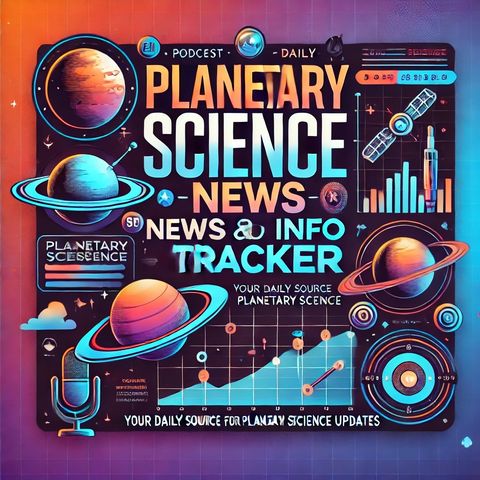Uncover the Secrets of the Moon with Interactive Apollo 15, 16, and 17 Mission Maps

Download and listen anywhere
Download your favorite episodes and enjoy them, wherever you are! Sign up or log in now to access offline listening.
Uncover the Secrets of the Moon with Interactive Apollo 15, 16, and 17 Mission Maps
This is an automatically generated transcript. Please note that complete accuracy is not guaranteed.
Description
Interactive Apollo 15, 16, and 17 Maps Available Now! Imagine it’s the early 1970’s. You’re a scientist helping lead the Apollo missions to the Moon, and you are trying to...
show moreImagine it’s the early 1970’s. You’re a scientist helping lead the Apollo missions to the Moon, and you are trying to figure out where to send the astronauts next. Where should they go? As a planetary scientist, you would probably want to send the astronauts to an area with “high scientific value,” but what exactly does that mean?
The 1970s were a defining decade for space exploration, marked by the pinnacle achievements of the Apollo missions. Among these, Apollo 15, 16, and 17 stand out not just for their successful landings, but for their focus on scientific exploration. The critical task of these missions was to land in lunar regions that promised the most valuable scientific returns.
During this period, scientists pored over extensive lunar maps and data to identify the best landing sites. For Apollo 15, the Hadley-Apennine region was chosen for its unique combination of highlands and volcanic plains. Apollo 16 targeted the Descartes Highlands, a site of bright highland terrain that promised to reveal information about the Moon's crust. Apollo 17, the final Apollo mission, was directed to the Taurus-Littrow valley, selected for its geologically diverse landscape that included features like ancient volcanic activity and landslides.
Now, for the first time, interactive maps of Apollo 15, 16, and 17 mission sites are available. These maps provide an engaging way for both scientists and enthusiasts to explore the meticulously chosen landing sites and surrounding areas.
The Apollo 15 interactive map highlights the intricacies of the Hadley-Apennine region. Users can see the rugged Apennine mountain range and Rima Hadley, a sinuous rille that drew much attention from scientists due to its potential volcanic origins.
The Apollo 16 map allows users to delve into the Descartes Highlands. The bright terrain here offered a different type of scientific interest, with the mission aimed at understanding the Moon's early crust. Features like the North Ray Crater and South Ray Crater are prominent, illustrating the areas where astronauts collected samples.
The Apollo 17 interactive map brings the Taurus-Littrow valley to your fingertips. This region was intriguing for its complex geological history, featuring both highland and valley landforms. The map details the locations of various exploration points like the South Massif and Shorty Crater, where astronauts discovered orange soil indicative of previous volcanic activity.
These interactive maps are more than just tools for navigation; they are windows into the Apollo missions' scientific endeavors. They allow users to trace the steps of the astronauts, study the geology of different lunar terrains, and understand the rationale behind site selections that have expanded our knowledge of the Moon.
With these tools, we can relive the decision-making process of the early 1970s, where each site was chosen for its potential to unlock the Moon's secrets. Modern planetary scientists and enthusiasts alike can appreciate the challenges and triumphs of selecting sites of "high scientific value."
Explore the new interactive maps of Apollo 15, 16, and 17 to step back in time and witness the Moon through the eyes of pioneering scientists and astronauts. These maps are available online, offering a unique perspective on one of humanity's greatest adventures.
Information
| Author | QP-4 |
| Organization | William Corbin |
| Website | - |
| Tags |
Copyright 2024 - Spreaker Inc. an iHeartMedia Company
